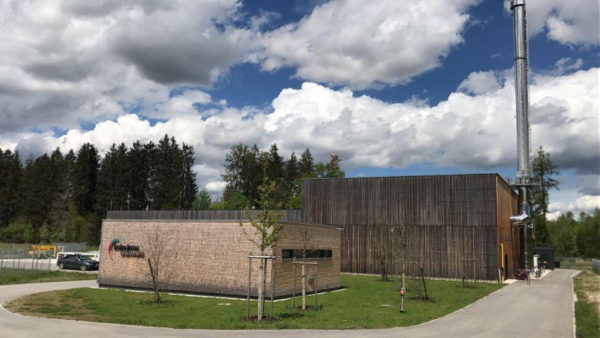The Massachusetts Institute of Technology has announced a breakthrough in fusion power that could lead to a commercial station coming on line in as little 15 years, thereby realising a way to generate electrical power from an inexhaustible fuel with almost no environmental consequences.
Fusion power depends on recreating the conditions inside a star, so that isotopes of hydrogen form a superheated plasma and “fuse” into helium. The problem is that, although these condition have been replicated in experimental set-ups for a few thousandths of a second, the power required to heat the plasma and confine it in a magnetic field has always been thousands of times greater than the energy extracted from it.
MIT’s breakthrough is in creating superconducting magnets that are able to create stronger magnetic fields for the power supplied.
The key to the new technology is the discovery that a compound of yttrium, barium and copper oxide (YBCO) that acts as a super-superconductor. This means that the cost, size and complexity of a fusion reactor can be greatly reduced. MIT’s planned Sparc reactor will be one sixty-fifth of the volume of the International Thermonuclear Experimental Reactor (ITER) being built in France, but is hoping to produce 100MW, or about one fifth of ITER’s output.
Work on developing Sparc will be carried out by MITs’ Plasma Science and Fusion Centre in conjunction with Commonwealth Fusion Systems (CFS), a newly created private company that has just received $50m in investment from Italian utility Eni.
Bob Mumgaard, chief executive of CFS, told The Guardian newspaper: “The aspiration is to have a working power plant in time to combat climate change. We think we have the science, speed and scale to put carbon-free fusion power on the grid in 15 years.”
Zach Hartwig, an assistant professor of nuclear science and engineering at MIT, said in an interview with MIT News that the basic science behind Sparc had been paid for with federal government funding, but it was necessary to find private money to pay for its development as technology.
“How does promising, federally funded research transition into a robust commercial product? We believe that this new model of collaboration between MIT and CFS provides this bridge. MIT continues its involvement beyond the federally funded research stage, providing scientific expertise and infrastructure for research, while CFS provides stable funding from long-term investment and a mechanism to accelerate and commercialize the technology.”
Claudio Descalzi, Eni’s chief executive, commented: “Thanks to this agreement, Eni takes a significant step forward toward the development of alternative energy sources with an ever-lower environmental impact. Fusion is the true energy source of the future, as it is completely sustainable, does not release emissions or long-term waste, and is potentially inexhaustible. It is a goal that we are increasingly determined to reach quickly.”
Image: A rendering of the Sparc fusion reactor (Ken Filar)
Further reading:
Comments
Comments are closed.











This article begs more questions. Such as the relative strength of the super-superconducting magnet compared to ITERs magnets. Such as: SInce all superconductors conduct without losing power, why will the new magnets save power? Is it in the superconductors’ cooling system??
In answer to Paul’s question, the new superconductor is better in the following ways-from a construction point of view, you have to understand that the actual superconductor itself is subject to massive loads and forces that are self induced via the magnetic field, so that requires significant structural bracing, the advantage lies in the fact that this new material , REBCO, is unusually easy to manufacture, can be as thin as 1 millimeter, is not as fragile and delicate as previous generations, and most importantly is a high temperature superconductor. Basically, this stuff is the complete opposite to the previous attempts, it is easy to work with, cheap to make, and can be applied like a roll of tape. All these parameters enable the magnetic field to be at LEAST ten times the strength, this is a truly stupendous gain in field strength. The previous TOKAMAC designs were restricted to be very large devices because of this lower field strength, which dictates many other physical parameters such as shielding, cooling, heat ex-changer’s design etc etc. With a much stronger field, confinement can be more compact, and, as a consequence, this new superconductor, REBCO, has easily allowed for the TOKAMAC devices to be built many orders of magnitude smaller but with still many times the field strength of previous attempts, production cost’s are now within reach of private start ups building devices that can fit in a room rather than huge international partnership pilot plants. This is no longer the standing joke, that fusion is always just twenty years away, it’s coming, it’s a definite thing, and I don’t think many people really understand just how this is going to change everything, limitless, abundant energy, I just hope the world is ready for this, it could, regrettably, be the catalyst for bringing out the worst in humanity. I hope I am wrong about that. But it is also more than just limitless electrical power, the actual fusion plant itself could very easily be used for providing the high energy and exhaust velocity plasma for space vehicle propulsion, such a system could conceivably provide exhaust velocities that approach an appreciable fraction of the speed of light, and unlike today’s weak ion drives, this level of thrust would be nearly immediate. Fusion is coming…mark my words.